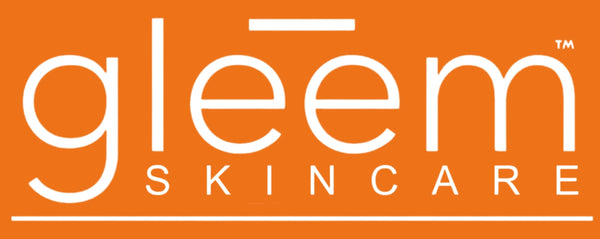After cancer treatment, many women describe the same experience:
“My skin just isn’t the same.”
- Products sting.
- Skin feels thin or reactive.
- Dryness shows up in places it never did before.
- Makeup doesn’t sit the way it used to.
And while these changes can feel alarming, they’re actually normal responses to treatment — and they can be supported with the right routine.
This guide breaks down why post-cancer skin becomes sensitive, what to avoid, what to embrace, and how gentle, microbiome-supportive care can bring your skin back into balance.
⭐ WHY POST-CANCER SKIN BECOMES SENSITIVE
1. Chemotherapy Thins and Weakens the Skin Barrier
Chemo reduces your natural oils, moisture retainers, and protective lipids.
Your skin loses its “shield,” making it easier for irritation to occur.
2. Radiation Creates Lasting Texture and Sensitivity Changes
Radiated skin may stay:
- tighter
- drier
- hotter
- more reactive
- for months — even years — after treatment.
3. Hormonal Therapy Alters Hydration and Elasticity
Estrogen influences almost everything about your skin.
When levels drop during treatment, you may notice:
- dryness
- tightness
- thin or papery texture
- new sensitivity
4. The Microbiome Loses Its Balance
Cancer treatment disrupts the skin’s natural bacteria — the protective ecosystem that keeps skin calm and resilient.
When the microbiome is off, the skin becomes:
- inflamed
- reactive
- slow to heal
- chronically dry
5. Stress Shows Up on the Skin
Emotional and physical stress during cancer raises cortisol levels.
Cortisol directly affects hydration, inflammation, redness, and healing.
⭐ WHAT POST-CANCER SKIN SENSITIVITY LOOKS LIKE
You’re not imagining these changes. Women commonly report:
- stinging or burning with products
- redness or flushing
- tightness after cleansing
- flaky or rough patches
- sensitivity to fragrance
- makeup applying unevenly
- slower healing
- dryness that keeps returning
Your skin isn’t “being dramatic” — it’s asking for gentler, safer care.
⭐ WHAT TO AVOID (AND WHY)
❌ Harsh Exfoliants & Strong Acids
Why avoid:
- Your barrier is already weakened. Scrubs and high-acid exfoliants can cause burning,
- micro-tears, and increased inflammation.
- Choose instead:
- Gentle hydration + soothing ingredients.
❌ Retinol (Initially)
Why avoid:
- Retinol increases sensitivity and dryness, which is the opposite of what post
- treatment skin needs.
- Choose instead:
- Bakuchiol or barrier-strengthening moisturizers until your skin is stable.
❌ Fragrance (Synthetic or Natural)
Why avoid: Fragrance is a major irritation trigger, especially on compromised skin.
Choose instead: Fragrance-free products with aloe and ceramides.
❌ Heavy, Occlusive Creams Too Early
Why avoid:
- Thick balms can trap heat and worsen redness on radiated skin.
- Choose instead:
- Layer light hydration first, then richer creams once skin has calmed.
❌ Over-Cleansing
Why avoid:
- Cleansing too frequently strips what little natural oil your skin has left.
- Choose instead:
- A gentle, low-foam aloe-based cleanser once a day (twice only when absolutely needed).
⭐ WHAT TO USE (AND WHY IT HELPS)
🌿 Aloe Vera
Why it works:
- calms redness
- cools irritation
- hydrates deeply
- supports healing
This is why aloe is the foundation of every Gleem formula — inspired by Marlene’s own post-cancer recovery.
🛡️ Ceramides & Lipids
Why they help: They replace the protective barrier that treatment depletes, reducing dryness and sensitivity.
🧬 Microbiome-Supporting Ingredients
Why they matter: A healthy microbiome = calmer, more resilient skin. Post-cancer skin especially needs this support.
💧 Hyaluronic Acid & Glycerin
Why they help: They pull water into the skin without heaviness — perfect for thin, dry, post-treatment skin.
🌙 Rich Night Creams (Once Skin Calms)
Why they help: They lock in hydration, support overnight repair, and strengthen the barrier.
⭐ A SIMPLE, SAFE ROUTINE FOR SENSITIVE, POST-CANCER SKIN
Morning
Gentle aloe-based cleanser
Microbiome-balancing moisturizer
One & Done SPF 50 (hydration + micro-dosed Vitamin C brightening)
Night
Hydrating mist or toner
Microbiome Moisturizer
Soft Immersion Night Cream to seal hydration
Gentle layering works better than strong actives.
Many women say:
“I beat cancer — why am I struggling with my skin?”
Because skin is identity.
It’s what you see every morning.
It’s how you meet yourself again after treatment.
Your feelings are valid — and you deserve products that honor both your skin and your story.
⭐ HOW GLEEM SUPPORTS POST-CANCER SKIN
Gleem was built for this exact moment — skin that is:
- sensitive
- reactive
- dry
- easily irritated
- in recovery
Our aloe-powered, fragrance-free, microbiome-supporting formulas provide:
- soothing hydration
- deep comfort
- barrier repair
- reduced redness
- long-term resilience
- Because healing should feel gentle — not overwhelming.
Post-cancer skin sensitivity is real, common, and completely understandable.
With the right ingredients and a gentler routine, your skin can rebuild strength, softness, and confidence.
You don’t have to rush. You don’t have to tolerate irritation. And you don’t have to go through skin recovery alone.
Gleem is here to support every step — with science, compassion, and formulas born from lived experience.

